Gestational diabetes augments group B Streptococcus infection by disrupting maternal immunity and the vaginal microbiota
- PMID: 38310089
- PMCID: PMC10838280
- DOI: 10.1038/s41467-024-45336-6
Gestational diabetes augments group B Streptococcus infection by disrupting maternal immunity and the vaginal microbiota
Abstract
Group B Streptococcus (GBS) is a pervasive perinatal pathogen, yet factors driving GBS dissemination in utero are poorly defined. Gestational diabetes mellitus (GDM), a complication marked by dysregulated immunity and maternal microbial dysbiosis, increases risk for GBS perinatal disease. Using a murine GDM model of GBS colonization and perinatal transmission, we find that GDM mice display greater GBS in utero dissemination and subsequently worse neonatal outcomes. Dual-RNA sequencing reveals differential GBS adaptation to the GDM reproductive tract, including a putative glycosyltransferase (yfhO), and altered host responses. GDM immune disruptions include reduced uterine natural killer cell activation, impaired recruitment to placentae, and altered maternofetal cytokines. Lastly, we observe distinct vaginal microbial taxa associated with GDM status and GBS invasive disease status. Here, we show a model of GBS dissemination in GDM hosts that recapitulates several clinical aspects and identifies multiple host and bacterial drivers of GBS perinatal disease.
© 2024. The Author(s).
Conflict of interest statement
The authors declare no competing interests.
Figures

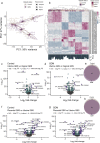

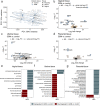
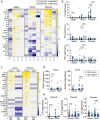
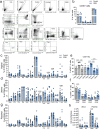


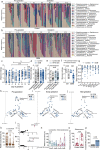
References
MeSH terms
Substances
Grants and funding
- R21 AI149366/AI/NIAID NIH HHS/United States
- P30 CA125123/CA/NCI NIH HHS/United States
- R25 GM056929/GM/NIGMS NIH HHS/United States
- P30 DK056338/DK/NIDDK NIH HHS/United States
- U19 AI157981/AI/NIAID NIH HHS/United States
- S10 RR024574/RR/NCRR NIH HHS/United States
- T32 GM152777/GM/NIGMS NIH HHS/United States
- R21 AI173448/AI/NIAID NIH HHS/United States
- T32 GM136554/GM/NIGMS NIH HHS/United States
- R01 DK128053/DK/NIDDK NIH HHS/United States
- F31 AI167547/AI/NIAID NIH HHS/United States
- F31 HD111236/HD/NICHD NIH HHS/United States
- F31 AI167538/AI/NIAID NIH HHS/United States
LinkOut - more resources
Full Text Sources
Medical
Molecular Biology Databases

